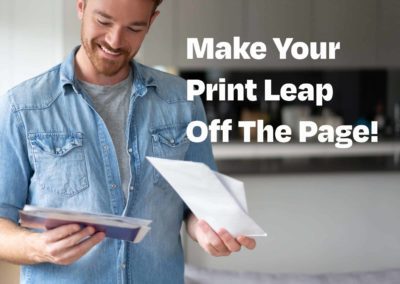In the digital age, businesses have a multitude of tools at their disposal to engage with customers. Among these, newsletters stand out as a powerful medium for fostering customer loyalty and enhancing retention. They offer a unique opportunity for brands to communicate directly with their audience, providing tailored content that speaks to the interests and needs of subscribers. But how exactly do newsletters contribute to customer retention, and what are the best practices for crafting them? This article explores the pivotal role newsletters play in maintaining a loyal customer base and how businesses can leverage them effectively.
Beyond simple communication, newsletters serve as a strategic vehicle for brands to convey their values, culture, and updates, helping to create a strong brand identity. In an era where consumers are bombarded with advertisements and information from various channels, a well-designed newsletter can cut through the noise, offering curated content that resonates with its audience. This relationship-building tool not only keeps customers informed but also makes them feel valued and part of a community, thereby increasing their likelihood of remaining loyal to the brand.
Why Newsletters Matter in Customer Retention
Newsletters offer a direct line of communication between a brand and its customers. They serve as a reminder of the brand’s presence, offering valuable content and updates that keep the audience engaged. Unlike other marketing channels that are subject to algorithm changes and visibility issues, newsletters provide a consistent and reliable way to reach your audience. Here’s why newsletters are essential for customer retention:
Building Relationships
Newsletters help businesses build strong relationships with their customers by providing regular touchpoints. Unlike social media posts that can easily get lost in a sea of content, newsletters land directly in a subscriber’s inbox. This direct access allows businesses to create a more personal and meaningful connection with their audience. Through thoughtful communication, newsletters can humanize a brand, making it relatable and approachable to customers.
Moreover, newsletters offer the opportunity for brands to share stories, updates, and behind-the-scenes content that strengthen the emotional connection with their audience. By sharing company milestones, employee highlights, or user-generated content, businesses can foster a sense of community and belonging among their subscribers. This emotional bond can be a powerful motivator for customer loyalty, as people are more likely to support brands they feel personally connected to.

Providing Value
A well-crafted newsletter provides value by offering insights, tips, and information relevant to the reader’s interests. This not only keeps customers informed but also positions the business as an authority in its field. When customers find value in the content, they are more likely to remain loyal to the brand. Valuable content can take many forms, from educational articles and how-to guides to exclusive interviews and industry reports.
Additionally, newsletters can serve as a platform for brands to showcase their expertise and thought leadership. By providing valuable insights and information, businesses can demonstrate their knowledge and understanding of their industry, which builds trust with their audience. This trust is crucial for customer retention, as customers who view a brand as an expert are more likely to turn to it for solutions and remain loyal over time.
Encouraging Engagement
Newsletters can drive engagement by prompting readers to take specific actions, such as visiting a website, participating in a survey, or taking advantage of a special offer. By encouraging interaction, newsletters help keep the audience engaged and invested in the brand. Engagement is a critical component of customer retention, as it strengthens the relationship between the brand and the customer.
Furthermore, newsletters can be used to gather feedback and insights from customers through surveys or polls. This not only engages the audience but also provides valuable information that can help businesses improve their products, services, and customer experience. By actively involving customers in the brand’s journey, businesses can foster a sense of ownership and loyalty among their subscribers.
Newsletter Best Practices for Customer Retention
To maximize the effectiveness of newsletters in customer retention, businesses should adhere to certain best practices. These strategies ensure that newsletters resonate with the audience and achieve the desired outcomes. Here are some key strategies to consider:
Know Your Audience
Understanding your audience is crucial for crafting newsletters that resonate. Take the time to segment your subscriber list based on demographics, preferences, and behaviors. This allows you to tailor content to meet the specific needs and interests of different customer segments. Segmentation helps ensure that your newsletters are relevant and personalized, which can significantly enhance engagement and retention.
Additionally, conducting regular surveys or feedback sessions can provide deeper insights into your audience’s preferences and interests. By understanding what your subscribers value most, you can refine your content strategy to deliver more of what they want. This customer-centric approach not only improves the effectiveness of your newsletters but also strengthens the relationship between your brand and its audience.
Offer Relevant and Valuable Content
The content of your newsletter should always be relevant and valuable to the reader. Share industry news, tips, and insights that will be of interest to your audience. Avoid overly promotional content and focus on providing information that enhances the reader’s experience with your brand. Striking the right balance between informative and promotional content is key to maintaining subscriber interest and engagement.
In addition to industry-related content, consider incorporating user-generated content, customer testimonials, or success stories to add authenticity and relatability to your newsletters. This type of content not only provides value but also reinforces the community aspect of your brand, encouraging subscribers to engage and connect with your content on a deeper level.
Craft Engaging Subject Lines
The subject line is the first thing a subscriber sees, and it plays a critical role in determining whether the email gets opened. Craft compelling and intriguing subject lines that pique the reader’s curiosity. Keep them concise and avoid using spammy language that might trigger email filters. A well-crafted subject line can significantly improve open rates, which is the first step towards engaging your audience.
Experiment with different subject line styles, such as questions, statements, or teasers, to see what resonates best with your audience. Personalizing subject lines with the recipient’s name or referencing their past interactions with your brand can also enhance the appeal and increase open rates. Ultimately, your subject line should reflect the content of the newsletter and deliver on the promise of value and relevance.
Maintain Consistency
Consistency is key in building a reliable brand image. Decide on a regular schedule for sending newsletters, whether it’s weekly, bi-weekly, or monthly, and stick to it. Consistent communication helps reinforce your brand’s presence and keeps customers anticipating your updates. A predictable schedule also builds trust with your audience, as they come to expect and look forward to receiving your newsletters.
In addition to scheduling, maintaining consistency in design, tone, and messaging is equally important. Ensure that your newsletters align with your brand’s overall look and feel, and that the content reflects your brand’s voice and values. This cohesive approach helps create a seamless experience for your subscribers, strengthening their connection to your brand.
Optimize for Mobile
With a significant portion of emails being opened on mobile devices, it’s essential to ensure your newsletters are mobile-friendly. Use responsive design templates that adapt to different screen sizes and test your newsletters on various devices to ensure they look great everywhere. Mobile optimization is crucial for maximizing engagement, as a poor mobile experience can lead to high bounce rates and disengagement.
Consider simplifying your newsletter design and using clear, concise language to ensure readability on smaller screens. Additionally, make sure that any calls-to-action or links are easy to click and navigate on mobile devices. By prioritizing mobile optimization, you can enhance the user experience and increase the likelihood of subscribers engaging with your content.
Personalize Your Content
Personalization can significantly enhance the effectiveness of newsletters. Use the subscriber’s name in the email and tailor content based on their previous interactions with your brand. Personalized content feels more relevant and can increase engagement rates. In addition to using names, consider tailoring recommendations or offers based on past purchase behavior or browsing history to create a truly customized experience.
Advanced personalization techniques, such as dynamic content blocks or AI-driven recommendations, can further enhance the relevance of your newsletters. By delivering content that speaks directly to the individual preferences and needs of your subscribers, you can create a more meaningful connection that fosters loyalty and retention.

Measuring the Success of Your Newsletters
To understand how well your newsletters are performing in terms of customer retention, it’s important to track specific metrics. These metrics provide valuable insights into the effectiveness of your newsletter strategy and help identify areas for improvement. Here are some key performance indicators (KPIs) to monitor:
Open Rates
The open rate indicates how many recipients opened your newsletter. A higher open rate suggests that your subject lines are effective and that your audience is interested in the content you’re providing. Monitoring open rates over time can help identify trends and inform adjustments to your subject line strategy to improve performance.
In addition to overall open rates, consider analyzing open rates for different segments or demographics to gain insights into what resonates with specific groups. This data can help you tailor your content and subject lines to better meet the needs and preferences of your diverse audience.
Click-Through Rates (CTR)
The CTR measures how many recipients clicked on a link within your newsletter. A high CTR indicates that your content is engaging and that the calls-to-action are compelling. This metric helps assess the effectiveness of your newsletter in driving engagement and interactions with your brand.
To improve CTR, experiment with different types of calls-to-action, such as buttons, links, or images, and test their placement within the newsletter. Additionally, ensure that your calls-to-action are clear, concise, and aligned with the overall message and goals of your newsletter.
Conversion Rates
The conversion rate tracks how many recipients took a desired action after clicking through your newsletter, such as making a purchase or signing up for an event. This metric helps assess the effectiveness of your newsletter in driving business goals. By analyzing conversion rates, you can identify which aspects of your newsletter are most successful in prompting subscribers to take action.
To enhance conversion rates, ensure that your newsletter content and calls-to-action align with your overall marketing objectives and provide a seamless journey for your subscribers. Consider offering exclusive incentives or promotions to encourage conversions and track the impact of these strategies on your overall performance.
Unsubscribe Rates
Monitoring unsubscribe rates can provide insights into how your audience perceives your newsletters. If you notice a spike in unsubscribes, it may be time to reevaluate your content strategy and ensure you’re meeting the needs and expectations of your subscribers. High unsubscribe rates can indicate a disconnect between your content and your audience’s interests.
To address high unsubscribe rates, consider soliciting feedback from subscribers to understand their reasons for leaving and identify areas for improvement. This feedback can be invaluable in refining your content strategy and ensuring that your newsletters continue to provide value and relevance to your audience.
Examples of Successful Newsletter Strategies
Example 1: E-commerce Brand
An e-commerce brand used newsletters to increase customer retention by offering exclusive discounts and early access to sales for subscribers. By segmenting their audience and personalizing content, they saw a 15% increase in repeat purchases from newsletter subscribers. The brand also incorporated customer reviews and testimonials into their newsletters, further enhancing the value and credibility of their content.
To maintain engagement, the brand regularly updated their newsletter design and included interactive elements, such as quizzes or polls, to keep subscribers interested. This dynamic approach not only improved engagement rates but also strengthened the overall relationship between the brand and its audience.
Example 2: SaaS Company
A SaaS company leveraged newsletters to provide educational content and product updates to their users. By focusing on delivering value and addressing common customer pain points, they achieved a 20% reduction in churn rate among their newsletter subscribers. The company also used newsletters to gather feedback and insights from users, which informed product development and customer support improvements.
In addition to educational content, the company included success stories and case studies in their newsletters, showcasing how their product helped customers achieve their goals. This not only reinforced the value of their offering but also inspired and motivated other users to engage more deeply with the product.
Conclusion
Newsletters are a vital tool for businesses looking to improve customer retention. By delivering valuable content, fostering engagement, and maintaining consistent communication, newsletters help build strong relationships with customers. By implementing best practices and continuously measuring success, businesses can harness the power of newsletters to keep their audience engaged and loyal.
Incorporate newsletters into your customer retention strategy today and watch as they transform your relationship with your audience. As you refine your approach and adapt to the evolving needs of your subscribers, newsletters can become an invaluable asset in your marketing arsenal, driving long-term success and growth for your brand.
Contact Newsletter Pro for Quality Newsletters
Ready to elevate your customer communication strategy with expert-crafted newsletters? Let Newsletter Pro guide you in creating engaging and effective newsletters that resonate with your audience. Our team of professionals is dedicated to delivering high-quality, personalized content that not only captures attention but also drives results. Contact Newsletter Pro today and start transforming your newsletters into a powerful tool for customer retention and growth. Reach out to us now and discover how we can help your brand achieve its goals with exceptional newsletters tailored to your unique needs.






